Last updated on March 18th, 2024 at 12:35 pm
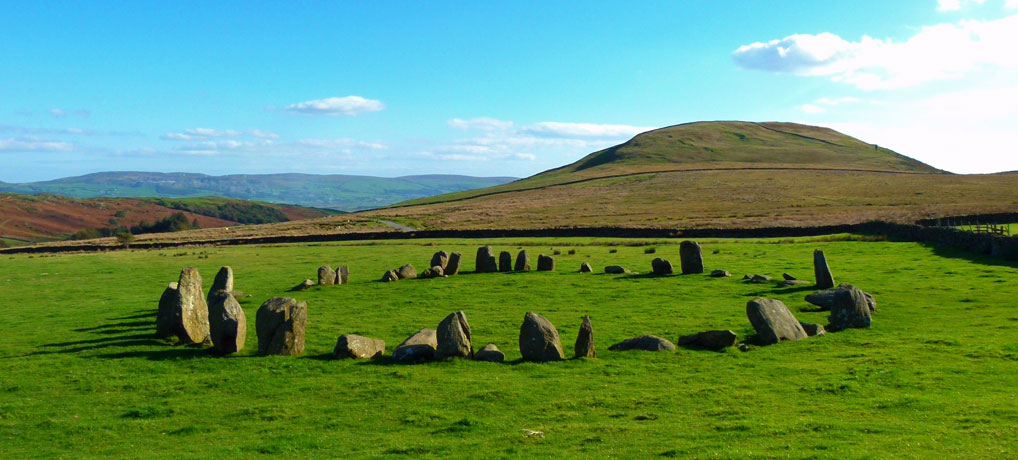
You cannot visit a stone circle, not even a little one, without being impressed. Think about it. Apparently, there are around 1,000 stone circles in Britain. Each one would have taken organisation, willpower and a heck of a lot of muscle to build. Imagine a conversation starting, “Hey, I’ve got this great idea…”
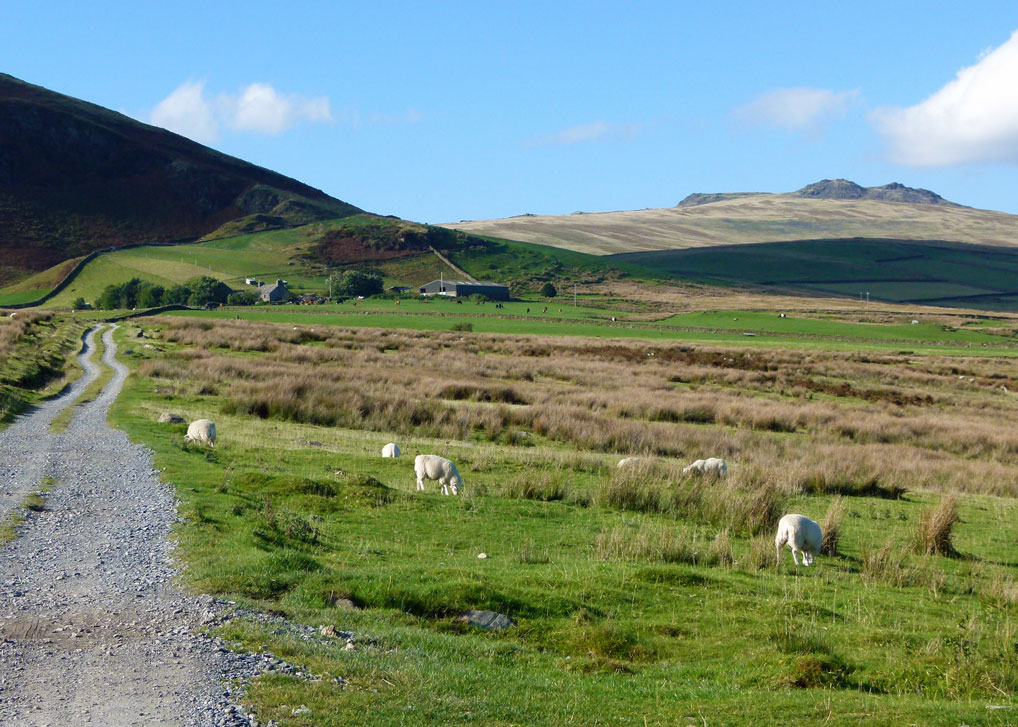
Stone circles are a mysterious feature of the late Neolithic/early Bronze Ages. Almost certainly, they were used for ceremonial and meeting purposes, perhaps bringing different tribes or family groups together. No one lived in them. Experts speculate that they perhaps represent a shift in religious practices. Another thing that might strike you is that stone circles are often located in places that, even today, are relatively remote. Swinside Stone Circle, on the south-western edge of England’s Lake District, is no exception. Unlike its much better-known cousin to the north, Castlerigg near Keswick, it’s a bit off the main tourist track. But it’s still not difficult to visit what is one of the north-west’s most significant, and evocative, prehistoric monuments. And, not only can you get up close and personal with the stones, but because it’s a little out of the way, you might find you’re the only person there.
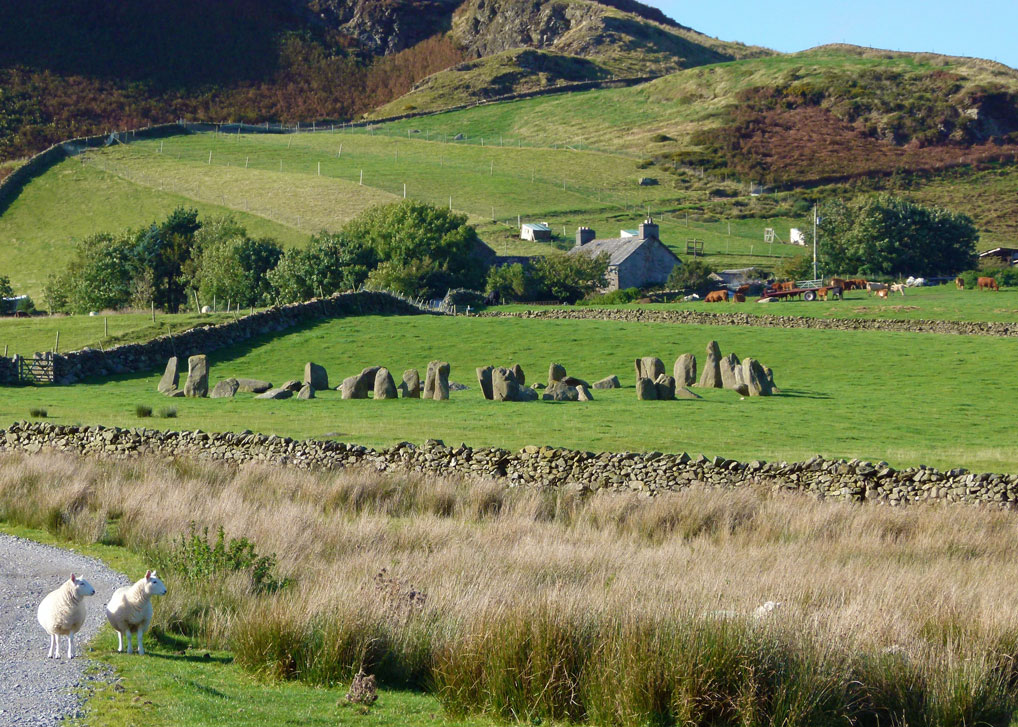
About 2½ miles west of Broughton in Furness on the A595 is a turning to Broadgate. Find somewhere safe to leave your car – which isn’t easy, parking is very limited – and walk north through the hamlet along a single-track road. After about ½ mile, you’ll find a trackway forking off to the left, leading into the hills, Swinside Farm and the Stone Circle – which you will find hunkered down on your right, beneath Swinside Fell about ¾ mile further on. It’s an easy walk. The circle is in a slight hollow and emerges into vision gradually. Turn toward the farm and you can normally access it via a five-bar gate. Not being privy to the criteria for siting stone circles, you can’t help wondering why our ancestors chose this location; but it is a lovely spot when the weather’s being kind, if a little lonely – despite the nearby farm.
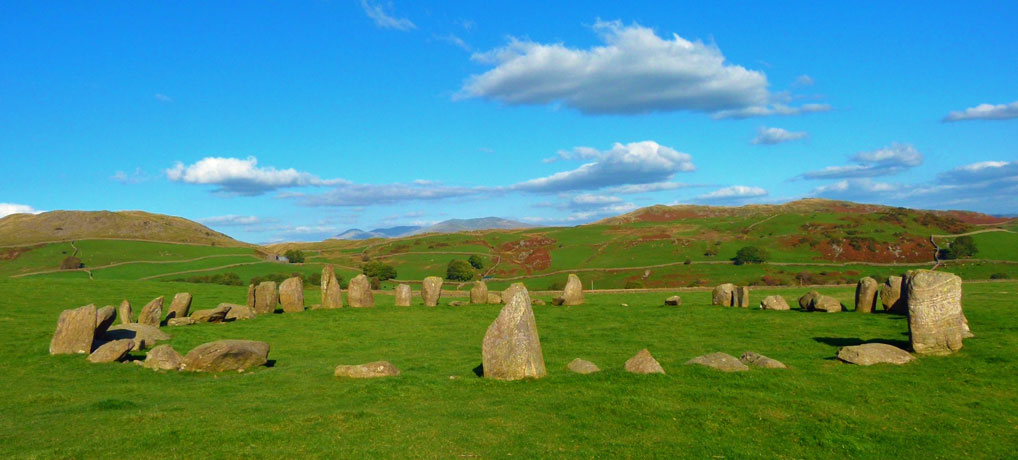
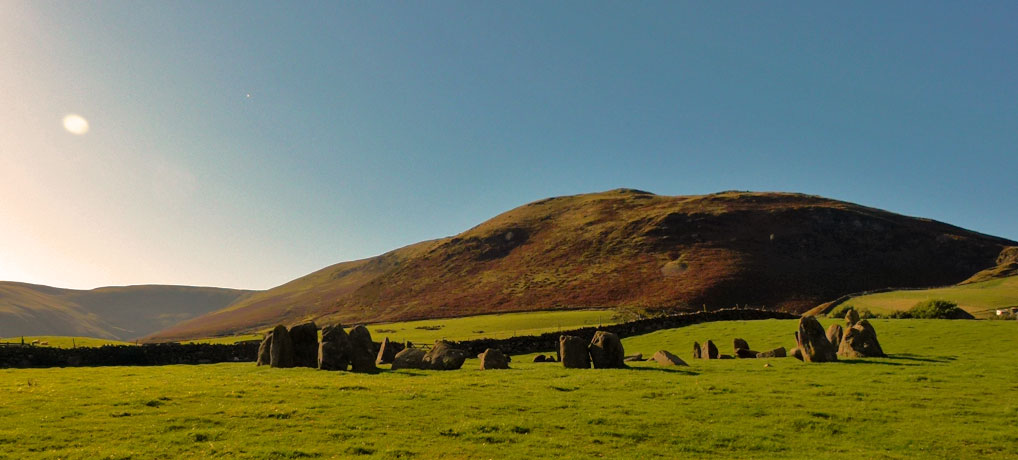
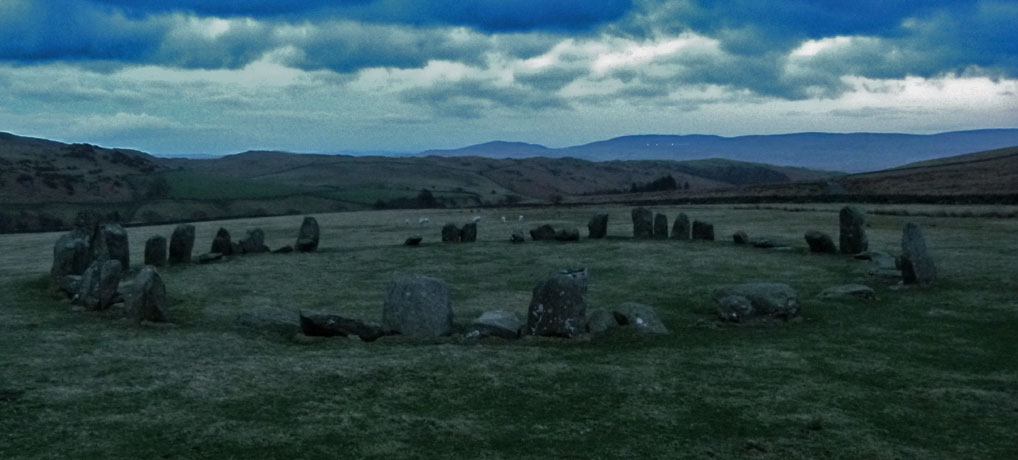
Swinside Stone Circle was constructed from local slate slabs on a foundation of packed pebbles some 5,000 years before you were born. The stones are up to 10 feet (3 metres) high and form what appears to be virtually a perfect circle, with an entrance on the south east. Here, sometimes, you’ll find some flowers – perhaps a gift to the Gods; perhaps marking the time of year. There are 55 stones and the circle is about 93 feet (27 metres) in diameter.
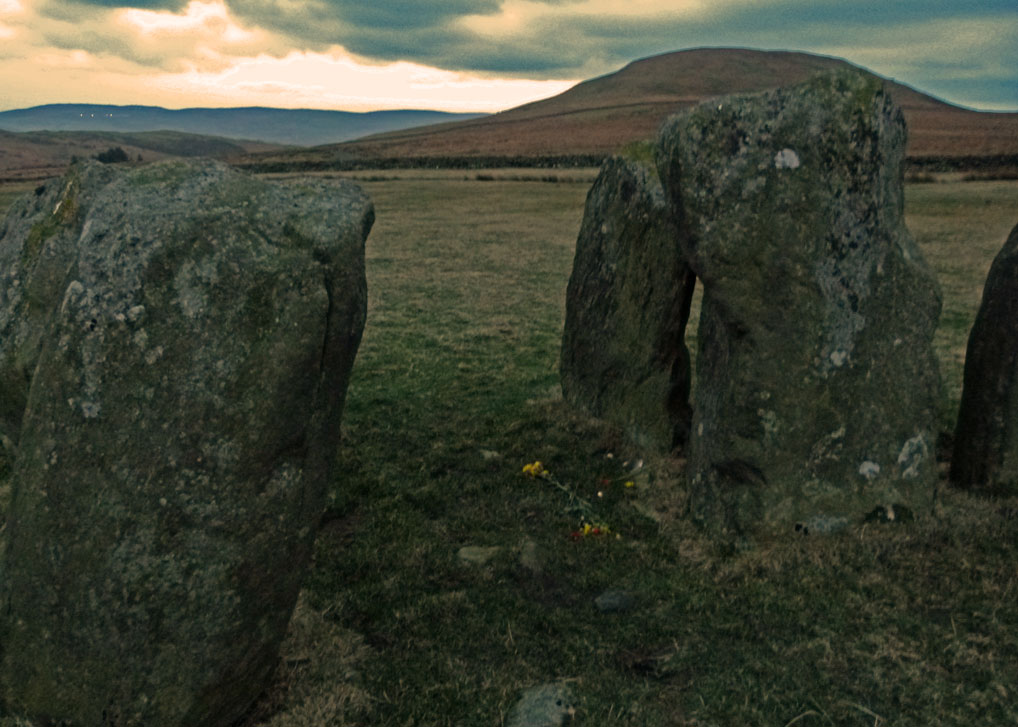
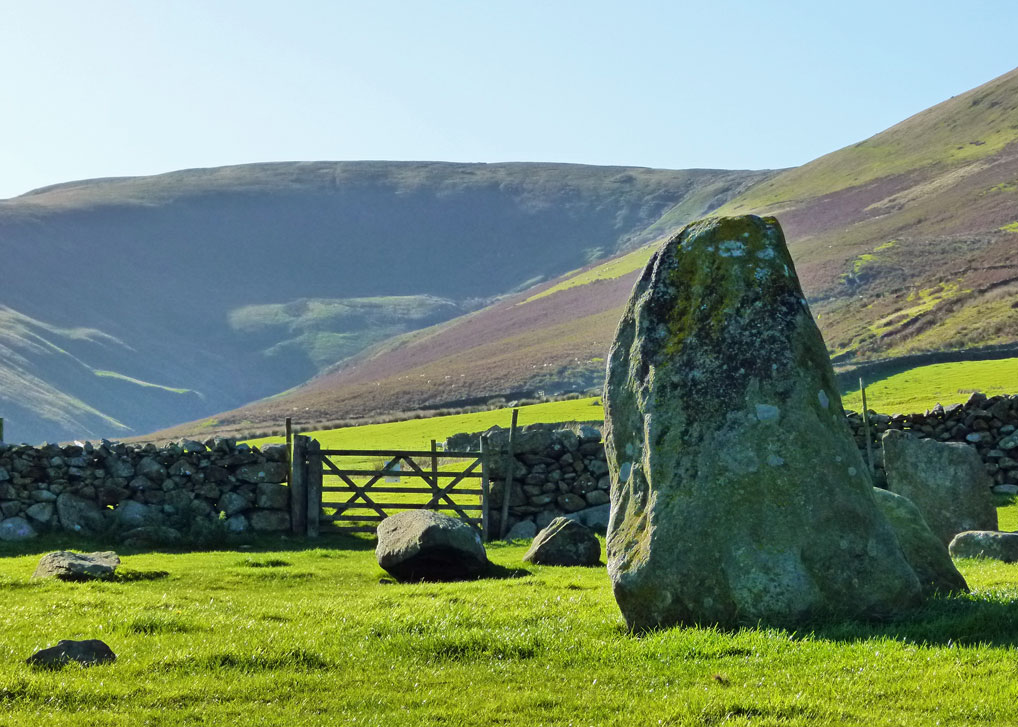
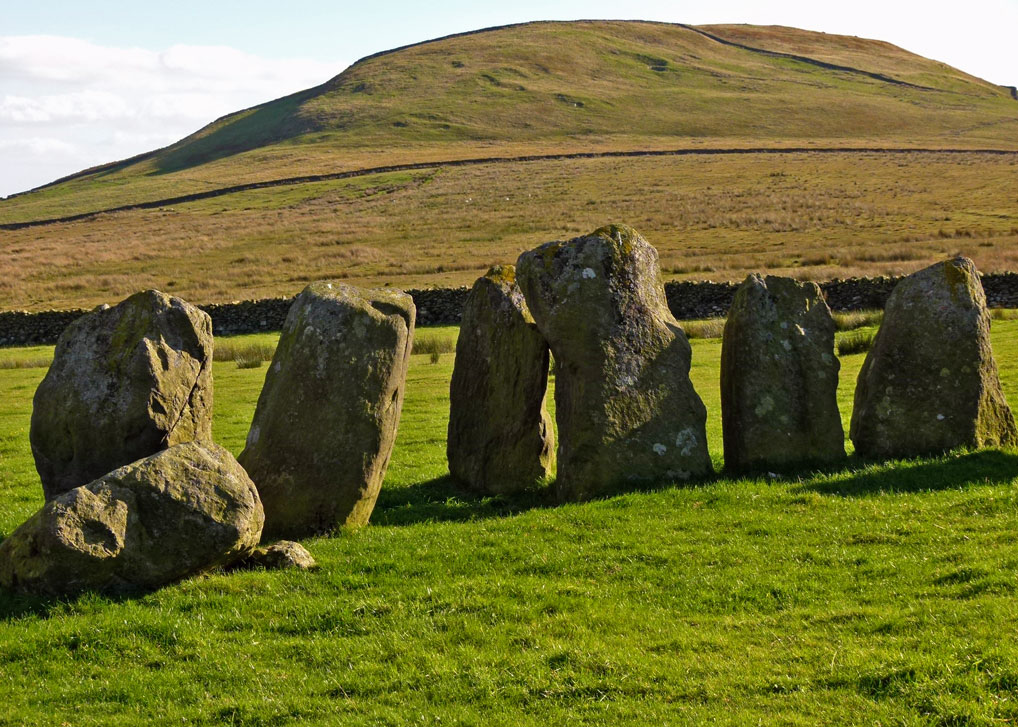
You will find that Swinside is often referred to as ‘Sunkenkirk’. It is even called that on the Ordnance Survey map. Local legend is that nearby villagers tried to build a church, but the Devil kept knocking the stones down. Similar stories are found elsewhere in these islands; maybe these intriguing, but elusive, pieces of folklore come from a time when early Christians were trying to persuade obstinate pagans to change their ways? Or perhaps there’s a church buried beneath the circle.
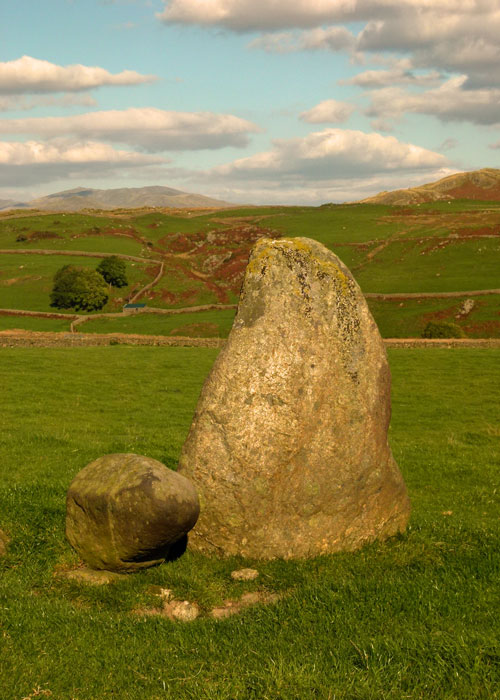
Stone circles were one of my favorite sights in Britain, and Swinside would win first prize, for its remoteness and loneliness. It seemed so fitting that my daughter and I could spend very quiet time there undistracted by other chatting real-time people, while we were musing about those of the distant past, and admiring the juxtaposition of sheep and stone. It was disappointing that by the time we asked directions twice and finally found our way to the circle after walking a mile, the sun was near going down. But being there at dusk did add to the numinous aspect of the experience!
That visit to Britain was before my blogging, but I mention Swinside in this post: https://gretchenjoanna.com/2009/04/03/rocks-and-stones/
I love all your photos!! This is definitely a place to return to, now that I have my own trusty iPhone to take pictures with. And maybe I could arrange to arrive earlier in the day; sunrise would be exciting!
So many stone circles..I should revisit Stonehenge for this project, but the visitor numbers put me off!
I copied one of your photos for my post but I gave the credit and link to your site and post. Hope you don’t mind. 🙂 I love these photos.
Thanks, Tina!
Great photos again Mike. SD and I usually visit The Merry Maidens near St Buryan in Cornwall when we are down there. There is such a feeling of peace and history in stone circles. A couple of years ago we got talking to a farmer near by who told us he had some standing stones on his land. SD asked what they were called – the farmer said (and you have to imagine the slow Cornish accent here) ‘Well, you can call um what you like but I usually just call um raaaaks’.
Stone circles are amazing and mystical places and I enjoyed reading about this one, especially the local legend. I’ve got a post to write up about Castlerigg, which I’ve visited three times in as many years. Lovely photos again.
Interesting. I had no idea there were so many stone circles.
What an interesting post, Mike. I had no idea there were so many stone circles in Britain. This one seems more or less complete but I have never heard of it before. Some of those, like in Avebury, are part of much larger structures, as of course you will know, but I suppose these are isolated ones. They look so much like people somehow, that I am sure they must have represented spirits. It is rather frustrating to know that we will never find out.
I always like seeing these formations.
Didn’t realise there were over 1000 around Britain …
All the best Jan
It’s a beautiful stone circle, located in a perfect landscape.
Fancy having that in your ‘bottom field’, wonderful.
What a fascinating spot. Is there other evidence of stone age inhabitants in that area?
I read in Archaeology Magazine about Must Farm in eastern England near Peterborough. Have you been there yet? There are the remains of a 3000 year old village destroyed by fire and preserved in the fens.
No, not visited Must Farm. Castlerigg Stone Circle isn’t too far from Swinside as the crow flies, but a tortuous journey by other means. Lots of stone age activity in the Lake District, including axe-making.
Hi Mike,
These pictures are wonderful!! This is indeed a remote place, but oh so beautiful. I love the third from last picture with the heather blooming on the hillsides. I can tell you must have spent a few (or more) hours there to capture the fading light in its progression. Great job! I think stone circles are fascinating, too, and of course their mystery is part of the allure.
Thanks for sharing with us, and I hope you are doing well. Have a good week, Mike!
Hugs,
Denise
Gorgeous area and fascinating about those stone circles.
Hi Mike – wonderful photos – love the Lake District. Incredible that there about 1,000 stone circles … yet they are all around the UK. I only really know the ones in Cornwall – but I’m sure I’ve seen the Lake District ones … though I was too young to take them in. What great photos and descriptions you’ve given us – gorgeous place to visit.
Why stone circles, what do they mean, how did they get the stones there … etc etc – it’s a pity we will never know … still people keep surmising … but so interesting … cheers Hilary
I m always amazing at just how many stone circles there are in this country of ours!
WOW! Great photos. I like the sheep photo bombing. 😉
Such a lovely location and your photos are as good as ever. You were very lucky with the weather! I will have to put this circle on the list of must-visit places for the next time we are in the Lakes.
I am fascinated by your photographs that show the stones in the context of the landscape and hills in the surrounding area.
I suspect if the stones and landscape were explored further it would be seen that the stones within the landscape are aligned to solstice and equinox events.
We have been to many of the circles in Britain and Ireland, but not this one, have to point it out to my husband. There is definitely something mystical about the circles.
I’ve always wondered about these circles. It would be so interesting to be able to go back in time and find out about them. Thanks for this post.
You introduce me to some fascinating places. I hadn’t realised there were so many stone circles in the UK.
Oh, I’m fascinated with those ancient stone circles. I always wonder what kind of society put them together. We’ve seen several in Scotland, plus Stonehenge of course. Did you know that recent archeology at the enormous Ring of Brodgar on Orkney has concluded that each of the 60 enormous stones came from a different location on the islands, presumably brought from a different village? Puts a whole new perspective on the building of stone circles.
I’m fascinated by these- and I’m surprised there are so many! It is a very pleasant spot.
And it comes with drystone walls and meandering sheep – what more could a body want! I’m pretty sure I’d like this stone circle more than Stonehenge, which I’ve seen.
Stone circles fascinate me, I wonder what the real story is behind them, generally the story we may hear is guess work since no one is old enough to know the story
I totally agree, these lovely stone formations are indeed something deeply profound. What a lovely setting this is as well!